The body of rock underlying the central Tiburon Peninsula is part of the large and sprawling Franciscan Complex, an assemblage of materials that was once involved in subduction. The oceanic plate whose small remnant is the Juan de Fuca plate, off Cascadia, has been subducting under North America for many millions of years. Most Franciscan rock is ordinary sandstone and shale, laid down offshore, that has been crushed and crunched in the subduction zone. Volcanic rocks on and in the oceanic crust are mixed in with these. The Ring Mountain block actually went deep down the subduction zone and somehow came back out. Thus it's a high-grade block, one that underwent a high degree of metamorphism. A large portion of it is serpentinite, yielding the typical toxic soil of a serpentine barren.
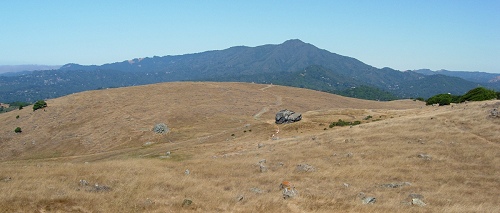
Amid that matrix is a large number of rocks bearing the signs of extremely deep burial recorded in their minerals. These have unfamiliar names like glaucophane, lawsonite, jadeite and actinolite. Together, they indicate very high pressure but relatively low temperature (specifically, pressures up to 2.5 GPa and temperatures of about 550°C). The ensemble is called blueschist, shown here.
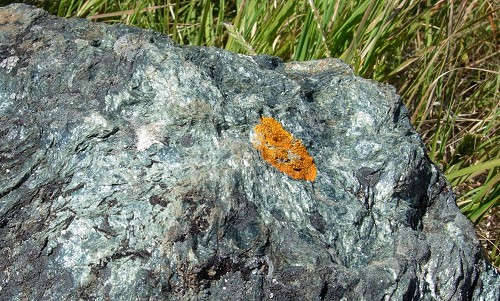
The pressure corresponds to depths around 100 kilometers, but this is not a straightforward matter and the depths could be less than half that. The tale the minerals tell is one in which cold volcanic rocks of the seafloor were carried down quickly to these depths, not fully heating up. There the rocks were metamorphosed into a new set of high-pressure, low-temperature minerals. Then somehow the rocks returned with comparable speed to the surface, so that these minerals could not change back to their original species. (This retrograde metamorphism is why these minerals so rarely occur in surface rocks.) The rocks emerge totally changed.
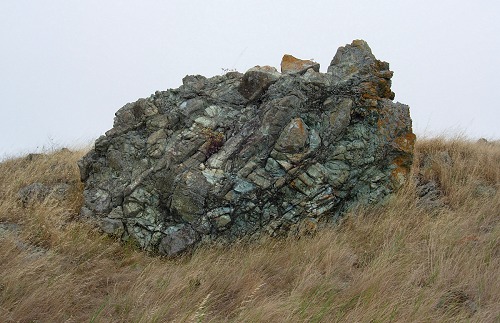
The picture this conjures up is that of a packet of rocks being spat out of the subduction zone like a watermelon seed in the fingers. But geologists don't accept stories because they seem sensible; they use them as scenarios to test over and over against the rocks. That's where the conversation among the specialists sits today.
Ring Mountain is many other things to its visitors. Rock climbers like the bouldering and may not notice the streamlined shapes that resulted from the kneading action in the subduction zone.
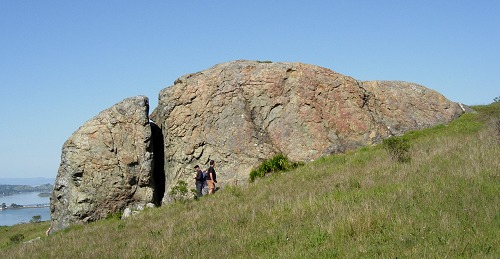
Botanists love the flowers and plants endemic to the serpentine habitat.
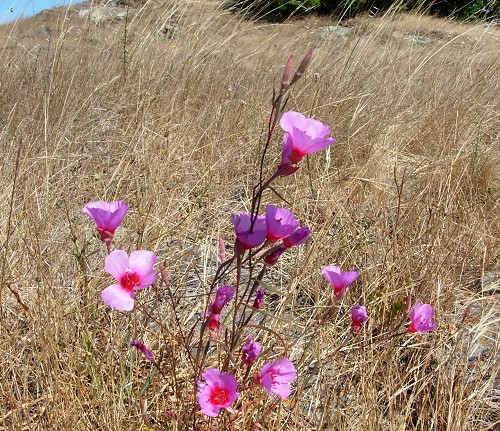
Photographers love Ring Mountain because it offers everything from the large scale to the small, with an endless variety of light and subjects. If you go, take only pictures because every rock and plant is protected there.
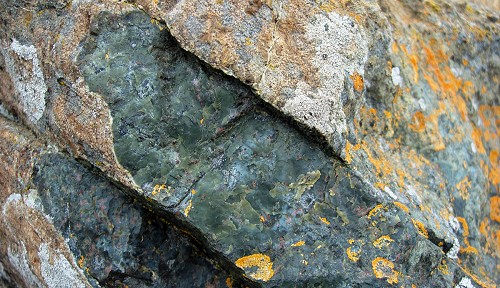
Find out more about Ring Mountain's geology on "To See A World from Ring Mountain" by Jim Locke of the College of Marin.
37.909 -122.491
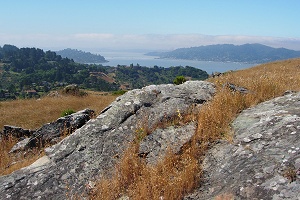 Ring Mountain invites the eyes outward with superb views of the Bay, but looking down at its rocks is also a rewarding pleasure. All photos by Andrew Alden.
Ring Mountain invites the eyes outward with superb views of the Bay, but looking down at its rocks is also a rewarding pleasure. All photos by Andrew Alden.





